DOH Medicaid Update January 2005 Vol. 20, No. 1
Office of Medicaid Management
DOH Medicaid Update
January 2005 Vol.20, No. 1
State of New York
George E. Pataki, Governor
Department of Health
Antonia C. Novello, M.D., M.P.H., Dr. P.H.
Commissioner
Medicaid Update
is a monthly publication of the
New York State Department of Health,
Office of Medicaid Management,
14th Floor, Room 1466,
Corning Tower, Albany,
New York 12237
Table of Contents
Enteral Formula: Change In Reimbursement
Patient Educational Tools: The Low Carbohydrate Frenzy
Prescribers and Pharmacists: Forge Proof Prescriptions
Highlights and Changes in the Medicaid Program
Prescribers and Pharmacists: Mandatory Generic Drug Program Update
Pharmacy Providers: You Must Bill Medicare First
eMedNY: Electronic Gateway To be Eliminated March 2005
Correct Billing For Medicare Part B Coinsurance
Hospitals: Billing DRGs (Diagnosis Related Groups)
Traumatic Brain Injury Providers: Documentation and Billing Requirements
Durable Medical Equipment Providers: Changes in Fee Schedule
eMedNY: Dental Claims HIPAA 837D Transaction
eMedNY: Magnetic Media Processing Notification
eMedNY: Changes Affecting Prior Approvals/Prior Authorizations
eMedNY: ePaces Enhancements for Phase II
Information for Recipients: Earned Income Tax Credit
eMedNY: Electronic Billing Changes for Ambulatory Services Providers
Physicians and Nurse Practitioners: New Drug Code for Risperdal Consta
Attention
Physicians
PROTOCOL FOR
GASTRIC BYPASS SURGERY
Return to Table of Contents

The Medicaid program provides reimbursement for gastric bypass surgery that has been determined to be medically necessary under the following circumstances:
- the service/procedure is an integral and necessary part of a course of treatment for an illness; and
- the patient's obesity was created by or is aggravating or creating pathological disorders; and
- regular medical treatment including endocrine, nutritional, psychiatric and counseling services, as appropriate, have been provided to the patient for a period of 12-24 months and regular weighing of patient has indicated insignificant weight loss.
Note: Under certain circumstances, it may be necessary to forego a medical treatment period when an urgent medical problem justifies surgery. No prior approval is required for this surgery. The detailed medical necessity for surgery must be documented in the patient's medical records. Surgical treatment should be a treatment of last resort to control obesity.


Enteral Formula Reimbursement Change
Pharmacy and DME Providers
Return to Table of Contents
Due to a change in Department regulation (Title 18 New York Code of Rules and Regulations (NYCRR) 505.5(d)(8)), the Medicaid reimbursement methodology for enteral nutrition has been changed.
For dates of service on or after January 1, 2005, reimbursement for enteral therapy is limited to the lower of:
- the acquisition price plus thirty-percent for generically equivalent products as indicated in the fee schedule; or
- the usual and customary price charged to the general public.
In addition, acquisition price is now defined in 18 NYCRR 505.5 (a)(10):
Acquisition price means that price determined and periodically adjusted by the State Health Department, which it deems a prudent Medicaid provider would pay for a reasonable quantity of generically equivalent enteral products.
It is anticipated that the fees for standard formulas (e.g., B4150, B4152) will be adjusted to reflect the regulatory changes.
Providers will be notified of reimbursement changes in advance.
When claims for specialty formulas (codes B4154 and B4155) pend for manual pricing, reimbursement will be calculated based on the regulation changes.
Questions regarding this article may be referred to the Bureau of Medical Review and Payment at (518) 474-8161.

PATIENT EDUCATIONAL TOOLS
Return to Table of Contents
This month's patient educational tools features
an article on
The Low Carbohydrate Frenzy
The Medicaid program encourages practitioners to copy and distribute the following information to their patients and to share it with their colleagues.
Carbohydrates are an important part of a healthy diet because they provide fuel for the body.
Many foods rich in carbohydrates are good sources of essential vitamins and minerals. However, carbohydrates aren't all good nor are they all bad. Some kinds of carbohydrates promote health while others, when eaten in large quantities, may increase the risk for diabetes and coronary heart disease.
- What are Carbohydrates?

- Carbohydrates come in a variety of foods and forms. The most common are sugars, starches and fibers. The basic building block of a carbohydrate is a sugar molecule. Carbohydrates can be bread, rice, beans, milk, popcorn, potatoes, corn and pies to name just a few examples.
- What are the two kinds of carbohydrates?
- There are simple carbohydrates and complex carbohydrates.
- What are simple carbohydrates?
- Simple carbohydrates include sugars such as fruit sugar (fructose), corn or grape sugar (dextrose or glucose) and table sugar (sucrose).
- What are complex carbohydrates?
- Complex carbohydrates include everything made of three or more sugars.
- How can I identify a "good or complex" carbohydrate?

- Food company labels make it difficult to spot a whole grain food. Companies often make food sound like it is whole grain and healthy when it isn't. You must read the food labels carefully. "Whole grain" products should be listed as whole wheat, whole oats, whole rye or some other whole grain. If the label says "made with wheat flour" it may be highly processed cake flour and could be an advertising gimmick.
- What happens to carbohydrates when they are eaten?
- The digestive system breaks down all forms of carbohydrates into single sugar molecules, since only these are small enough to enter the bloodstream. It also changes most digestible carbohydrates into glucose (also known as blood sugar), so cells can use this as a source of energy.
- What is the meaning of the term "glycemic index?"
- The glycemic index measures how fast and how much blood sugar levels rise after eating a food with carbohydrates.
- What does low glycemic index mean?

- Food that has a low glycemic index release sugar slowly into the blood stream, avoiding rapid peaks in blood sugar levels. Complex carbohydrates have a low glycemic index because they have molecules that are made up of many sugars, which takes the stomach longer to break down. Examples of complex carbohydrate foods with a low glycemic index are most legumes, whole fruit, whole wheat bread, oats, bran, brown sugar, bulgur, barley, whole grain breakfast foods and couscous.
- What does high glycemic index mean?
- Foods with a high glycemic index are simple sugars which are quickly broken down in the mouth and stomach and are absorbed into the bloodstream. High glycemic foods cause a rapid rise in blood sugar levels. This rapid rise causes the body to produce a sharp rise in insulin levels and results in the sugars being changed into fat, something we should avoid. Examples of foods with a high glycemic index are white potatoes, bananas, white bread, white rice, french fries, most breakfast cereals, white spaghetti, soda and sugar.
- What is insulin?
- Insulin is a hormone that is made in the pancreas and is responsible for breaking down proteins, fats and sugars into their simplest form to be used by the body's cells.
- What is insulin resistance?
- Insulin resistance occurs over time as the heavy demand made on the insulin-making cells wears them out. Insulin production first slows down then stops completely. Repeatedly eating high glycemic foods throughout a person's lifetime could result in insulin resistance and lead to diabetes and heart disease. Insulin resistance has also been linked to other problems such as high blood pressure, high triglyceride levels, low HDL (good) cholesterol and possibly some cancers.
- What is fiber?
- Fiber is basically a carbohydrate from plants that cannot be digested. Dried beans such as kidney or pinto beans, fruits, vegetables and whole grains are all good sources of fiber. The recommendation is to eat 25-30 grams of fiber a day. Since fiber is excreted as waste and not digested, eating fiber is a good way to stay full without gaining a lot of weight.
- Should I follow a high protein, low-carbohydrate diet?

- While there is evidence that a low carbohydrate diet may help people lose weight faster than a low fat diet, no one knows the effects of eating little or no carbohydrates. Also high protein diets contain a lot of unhealthy fats. Unhealthy fats could increase the risk for heart disease and colon cancer. So whenever possible, replace highly processed grains, cereals, and sugars with minimally processed whole grain products.
Source: The Harvard School of Public Health http://www.hsph.harvard.edu/nutritionsource/carbohydrates.html
Prepared by the NYS Department of Health, Office of Medicaid Management, Bureau of Program Guidance 12/04
Attention
Prescribers and Pharmacists
FORGE PROOF PRESCRIPTIONS
Return to Table of Contents

Background
In August 2004, Governor Pataki signed into law a new Section 21 of the Public Health Law.
This law requires that all prescriptions written in New York be on serialized Official New York State Prescription Forms.
Presently, only prescriptions for specified controlled substances are required to be placed on these forms.
Regulations implementing this statute were filed on an emergency basis in October 2004. This program will be implemented over an 18-month period during which either the Official New York State prescription form or current prescription blanks can be used. The 18-month implementation period ends on April 19, 2006.
The new law does not change any requirements regarding prescriptions or dispensing currently imposed by State Education Law and regulations.
The program is expected to seriously curtail illegal drug diversion caused by the forging or theft of prescriptions. Illegal drug diversion costs the Medicaid program and private health insurers millions of dollars annually. Additionally, because many of these drugs are resold to consumers, drug diversion is also a serious threat to public health.
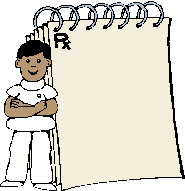
The Official New York State Prescription Form Program
This program is being administered by the Bureau of Narcotic Enforcement (BNE) within the Department of Health. BNE will establish a hotline for questions in the near future and will be providing additional detailed information and outreach seminars to providers and facilities.
- BNE will register providers and facilities over an 18-month period for the purpose of issuing the official prescription forms.
- The forms will be free of charge.
- Providers and facilities must undertake adequate safeguards and security measures to assure against loss or theft of the forms. Additionally, where providers or facilities become aware of the theft or unauthorized use of the form, they must notify BNE.
For more information on this new law contact the BNE toll-free hotline at: (866) 811-7957 or narcotic@health.state.ny.us

Highlights of Changes in the Medicaid Program
Return to Table of Contents

Based on the new Section 21 of the Public Health Law, the NYS Medicaid program will make the following changes to Medicaid prescription requirements:
Effective January 3, 2005

- Prescription Drugs
- A follow-up hard copy prescription will no longer be required for oral and faxed prescriptions of non-controlled prescriptions with or without refills.

- A follow-up hard copy prescription will no longer be required for oral and faxed prescriptions of non-controlled prescriptions with or without refills.
- Fiscal Orders for Non-Prescription Drugs (Over-The-Counter Drugs)
Note: This policy only applies to non-prescription drugs. DME and Supplies are excluded from this policy.- Oral/telephone and faxed orders will be allowed for over-the-counter (non-prescription) drugs.
- Refills will be allowed on oral and faxed over-the-counter drug orders.
- A follow-up hard copy order will not be required.
- Faxed Prescription/Fiscal Order Reminders:
It is the responsibility of the pharmacist to make a good faith effort to verify the practitioner's identity and validity of the prescription if the practitioner is unknown to the pharmacist.
- Faxed prescriptions or fiscal orders must originate from a secure and unblocked fax number (that is, the source fax number is clearly visible on the fax that is received).
- The faxed prescription or fiscal order must include the physician stamp and signature.
- Each page of a faxed prescription or fiscal order may include only one (1) drug. Lists of drugs are not acceptable as faxed fiscal orders.*
- After full implementation of the Official New York State Prescription Form (April 19, 2006), all faxed prescriptions and fiscals orders must be on the Official New York State Prescription Form.
*Drugs ordered from a nursing home are exempt from this requirement.
See the May 2004 Medicaid Update for more information or by email request at MedicaidUpdate@health.state.ny.us; or by telephone at (518) 486-3209.
Effective April 1, 2005

- Electronic (terminal-to-terminal) transmission of prescriptions for non-controlled substances and OTC drugs will be allowed consistent with State Education requirements. Prescriptions for brand-name drugs with a generic equivalent will not be allowed to be electronically transmitted until federal approval has been obtained. Providers will be notified once this occurs.
- Pursuant to Medicaid and State Education regulations, pharmacies will be required to print and maintain a hard copy of the electronically transmitted prescription for a period of six (6) years.
- The Official New York State Prescription Form is not required for prescriptions transmitted electronically (terminal-to-terminal).
Effective On or After June 1, 2005

- Medicaid claims for prescription drugs and OTCs should contain the prescription serial number from the Official New York State Prescription Form if available. Use of the serial number will enable us to identify stolen or otherwise forged prescriptions.
- The number will also be bar coded for ease of entry and edits will be constructed to alert pharmacies through the MEVS process, of prescriptions which may have been lost or stolen.
- This process is being started approximately 12 months prior to the final implementation date of April 19, 2006 to provide pharmacies with ample "lead time" to become familiar with this process. Further detailed information on this process will be provided by the Department.
Effective April 19, 2006

- Only the Official New York State Prescription Form can be used for all written orders, fiscal orders and faxed prescriptions.
- Oral orders and electronically transmitted prescriptions (other than "paper-faxed" prescriptions) will not require the Official New York State Prescription Form.
- For Medicaid pharmacy claims, transmission of the serial number on the Official New York State Prescription Form will be mandatory.
The Department has met with numerous groups affected by this new law and looks forward to a continued working relationship with the provider community as we implement this program.
Due to the relaxing of the Medicaid prescription requirements, and to meet State and federal requirements, some minor changes will be made to the Mandatory Generic Drug Program.
Please see the Mandatory Generic Drug Program Update article in this edition of the Medicaid Update for further information.
For more information on the changes to Medicaid prescribing requirements, contact the Medicaid Pharmacy Policy and Operations staff at (518) 486-3209 or PPNO@health.state.ny.us.
Mandatory Generic Drug Program Update
Return to Table of Contents
As a result of recent legislation and to reduce paperwork for prescribers, the Medicaid program will no longer require a follow-up prescription for phone-in or faxed prescriptions for non-controlled substances.
However, to be in compliance with State and federal laws governing the ordering of brand name drugs, some minor changes will be made to the Mandatory Generic Drug Program.
If a generic drug is prescribed, no additional actions are required!
Medicaid Prescription Requirements for Prescribing of Brand-Name Drugs
For all prescriptions written for a brand-name drug when an A-rated drug is available:
- the prescriber must indicate "DAW" in the appropriate box and write "brand medically necessary" or "brand necessary" in their own handwriting on the face of the prescription.
- the prescriber must obtain prior authorization, except for exempt brand-name drugs.

- the prescriber must sign, date and attest "Brand (Medically) Necessary" in their own handwriting on the Mandatory Generic Drug Program prescriber worksheet and retain in the patient's medical record*.
Oral prescriptions for brand-name drugs are now allowed only if the prescriber has:

- obtained prior authorization,
- informed the pharmacist of the "daw", "brand medically necessary" designation; and,
- completed and retained the Mandatory Generic Drug Program prescriber worksheet in the patient's medical record. A follow-up prescription is no longer required.
*Note: The requirement that this worksheet be completed and kept in the patient's record is unchanged. However the prescriber must now certify "Brand Medically Necessary" on the worksheet, and sign and date the worksheet. Prescribers must also complete a worksheet for exempt drugs to meet the brand-name prescribing requirements of federal law.
Remember: If a generic drug is prescribed, no additional actions are required.
Following is updated information on the Mandatory Generic Drug Program and updated worksheets for prescribers.
If you have any questions, contact the Pharmacy Policy and Operations staff at 518-486-3209 or PPNO@health.state.ny.us.
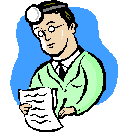
Section One: Information for Prescribers
How to Obtain a Prior Authorization

Below are general guidelines for prescribers about the Mandatory Generic Drug Program. The next two pages provide the Prior Authorization Worksheet, with step-by-step instructions on completing the call, and the exact questions that will be asked when you make the phone call to obtain a prior authorization.
Generic drugs do not require prior authorization. Only brand-name drugs with an A-rated generic require prior authorization.
The prescriber must call the Prior Authorization Call Line to initiate the prior authorization process.
Once approval has been given and a prior authorization number is obtained, the prior authorization number must be written on the prescription and documented on the Prior Authorization Worksheet (see following page).
The patient's medical record must include documentation of the patient's need for a brand, rather than a generic drug (e.g., allergic reaction to the generic product's inactive ingredients, adverse reaction t generic product's inactive ingredients, etc.). In addition, the completed prior authorization worksheet, including date, prescriber signature and certification (indicating "Brand (Medically) Necessary" in the prescriber's own handwriting) must be kept in the patient's medical chart.
Prior authorization is required for each specific prescription and is effective for up to six months. Each time a new prescription is written for the brand-name drug when a generic equivalent is available, a new prior authorization must be obtained, and the new prior authorization number written on the prescription.
A prescriber or agent of the prescriber (an employee such as a medical assistant-recipients may not obtain their own prior authorization) may complete the prior authorization process and write the prior authorization number on the prescription. However, the prescriber must certify in his/her own handwriting "Brand (Medically) Necessary" and sign and date the hard copy original prescription. For phone-in or faxed prescriptions, the prescriber must certify in his/her own handwriting "Brand (Medically) Necessary" and sign and date the prior authorization worksheet.
If a prior authorization number is not on a prescription for a brand-name drug which has a generic equivalent, the pharmacy will not be able to bill Medicaid for the prescription. The pharmacy will need to contact the prescriber to ask that the prior authorization process be completed, or that the prescription be changed. If this does not occur, the patient may have to return to your office, or call your office to get the necessary prior authorization number.
Hard-copy prescriptions for brand-name drugs will continue to require "DAW" and "Brand (Medically) Necessary" on the prescription in the prescriber's own handwriting, in addition to the prior authorization number. These requirements are mandated by State and federal law.

For billing questions, contact 1-800-343-9000. For clinical or policy questions, contact the Pharmacy Policy and Operations Staff at 518-486-3209
NEW YORK STATE MEDICAID PROGRAM
BRAND-NAME PRIOR AUTHORIZATION INDIVIDUAL PATIENT
REQUEST
PRESCRIBER INSTRUCTIONS
Return to Table of Contents
Prior Authorization is NOT necessary for:
- A generic drug.
- A brand-name drug when there is no "A" rated generic.
- A brand-name drug without "DAW/Brand (Medically) Necessary" written on the prescription. The patient will receive the generic product.
Prior Authorization Call Line 1-877-309-9493
- Prescriber writes prescription for brand product, designates "DAW" and writes "Brand (Medically) Necessary".
- Prescriber or agent (employee of prescriber) calls 1-877-309-9493. Information can be entered either by voice or by using the phone keypad.
- Choose the Brand-Name Prior Authorization - option '3'.
A. PRESCRIBER IDENTIFIER:
Choose Prescriber Option
Residents and physician assistants must use the MMIS/License number of their supervising physician. Do not use a hospital/clinic or group MMIS number.
- Enter your personal Medicaid identification number (MMIS)
OR - License Number Choose '1' for Physician/Physician Assistant/Resident
- Choose '2' for Optometrist
- Choose '3' for Nurse Practitioner/Midwife
- Choose '4' for Dentist
- Choose '5' for Podiatrist
B. CLIENT IDENTIFICATION NUMBER - Enter the patient's Medicaid client identification number (2 letters, 5 numbers, 1 letter). Follow the prompts.
C. BRAND-NAME DRUG - Clearly state the name of the brand-name drug you are prescribing.
D. REASON BRAND-NAME DRUG IS REQUIRED:
Enter the medical reason you are prescribing the brand-name drug, rather than the generic.
- Allergy to generic drug inactive ingredient(s)
- Adverse reaction to generic drug inactive ingredient(s)
- Documented history of successful therapeutic control with brand-name drug
- A prior authorization number will be returned; write it legibly on the face of the prescription.
- Do not fax a copy of this worksheet, it should be kept in the patient's medical chart for future reference.
- Phone or fax prescriptions are allowed, but the signed prior authorization worksheet with "Brand (Medically) Necessary" in the physician's own handwriting must be kept in the patient's chart. This is a federal and State requirement.
The Brand-Name Prior Authorization Worksheet should be reproduced for future prescribing. It is also available on the Department's website,
For billing questions, contact 1-800-343-9000.
For clinical concerns or policy questions, contact the
Pharmacy Policy and Operations Staff at (518) 486-3209.
NEW YORK STATE MEDICAID PROGRAM
BRAND-NAME PRIOR AUTHORIZATION INDIVIDUAL PATIENT REQUEST
PRESCRIBER WORKSHEET
Return to Table of Contents
Prior Authorization Call Line 1-877-309-9493
Brand-name drugs with an A-rated generically and therapeutically equivalent product (as determined by the FDA) must be prior authorized effective November 17, 2002. A voice interactive call line is utilized to obtain prior authorization when appropriate.
The following drugs are exempt from the mandatory generic requirement and do not require prior authorization. However, DAW and "Brand (Medically) Necessary", in the prescriber's own handwriting, is still required on the prescription (including faxed prescriptions). Although prior authorization is not required when prescribing the following exempted drugs, this worksheet must be completed and kept in the patient's record to document the need for the brand-name version.
| Coumadin® | Dilantin® | Neoral® | Gengraf® | Sandimmune® |
| Cloraril® | Lanoxin® | Tegretol® | Zarontin® |
Please fill out completely and be prepared to respond to these questions when you call.
A. PRESCRIBER IDENTIFIER
Ordering Practitioner Medicaid ID number
OR
NYS Physician/PA/Resident
NYS Optometrist
NYS Nurse Practitioner/Midwife
NYS Dentist
NYS Podiatrist
OR
Out-of-State Prescriber License
Complete one of the following prescriber identifiers:
MMIS ID Number __ __ __ __ __ __ __ __
OR
0 0 __ __ __ __ __ __
U__ __ __ __ __ __ or V__ __ __ __ __ __ or T__ __ __ __ __ __
O F __ __ __ __ __ __
0 0 0 __ __ __ __ __
0 0 0 0 __ __ __ __
OR
__ __ __ __ __ __ __ __ (Use your state abbreviation in the first two spaces.)
B. CLIENT IDENTIFICATION NUMBER (2 letters, 5 numbers, 1 letter)
__ __ __ __ __ __ __ __
C. BRAND-NAME DRUG
D. REASON BRAND-NAME DRUG IS REQUIRED
The patient's medical record documents the following primary reason for the brand-name prescription. (Indicate the number that corresponds with the primary reason the brand-name drug is required)
1. Allergy to generic drug inactive ingredient(s)
2. Adverse reaction to generic drug inactive ingredient(s)
3. Documented history of successful therapeutic control with brand-name drug
#________________
Place the PA number here for your records and on the patient's "Brand" prescription.
Remember for hard copy prescriptions you must also write "DAW" and "Brand (Medically) Necessary" on the prescription. For phone and faxed prescriptions, prescribers must attest by signing, dating and writing "Brand (Medically) Necessary" below.
__ __ __ __ __ __ __ __ __ __ __*
* Effective March 26, 2005, an 11 digit PA number will be utilized. Prior to this date only an 8 digit PA number will be issued.
______________________________________________________________________________________
Prescriber Signature Date Brand (Medically) Necessary

PHARMACY PROVIDERS
BILL MEDICARE FIRST!
Return to Table of Contents
The edit enforcing pharmacy Medicare maximization, which was originally scheduled to begin on January 3, 2005, is delayed until further notice. However, pharmacists are still expected to bill Medicare first for drugs and supplies when Medicaid recipients have Medicare coverage.
For information on Medicaid pharmacy policy, please call the Pharmacy Policy and Operations Unit at (518) 486-3209.
eMedNY
Update
All Providers
The Electronic Gateway
To Be Eliminated March 2005!
Return to Table of Contents
The Medicaid Management Information System (MMIS) Electronic Gateway will be eliminated in March 2005. In order to be prepared for this implementation, MMIS Electronic Gateway submitters are strongly encouraged to sign up for the eMedNY eXchange now.

Providers Enrolled in ePACES
Providers enrolled in the Electronic Provider Assisted Claims Entry System (ePACES) will be automatically enrolled to use the eMedNY eXchange with their existing user IDs.
Providers Not Enrolled in ePACES
Providers not enrolled in ePACES will need to follow an eMedNY eXchange enrollment process, during which they will be issued a user ID and an initial password.
Providers Using Dial-Up Method
Providers wishing to continue submitting their claims using the dial-up method following Phase II implementation will need to register for the eMedNY Electronic Gateway. A new ID and password will be issued.
The eMedNY Electronic Gateway will remain an access option after Phase II implementation. However, this method will also be discontinued at some time in the future.
Providers are encouraged to consider other options, such as ePACES, eMedNY eXchange or FTP.
If you have any questions or need more information, please visit the eMedNY website (www.emedny.org) or call CSC Provider Services at 800-343-9000.
Correct Billing for Medicare Part B Coinsurance
For Non-HIPAA Compliant and Paper Claims
Return to Table of Contents

The Department has found a number of providers incorrectly billing for Medicare coinsurance claims when also billing for the Medicaid deductible. This has resulted in duplicate claims as well as overpayments.
The policy for billing Medicare Part B coinsurance and deductible ("crossover") claims was described in a November 26, 2003 provider letter mailed to you by the Office of Medicaid Management (OMM). As a reminder, the policy is:
Medicaid will pay 100% of the Medicare deductible amount and 20% of the coinsurance amount ("20% of the 20%), for most part B services. This policy has not changed.
- A coinsurance claim should only be billed when the patient has exceeded the $100 annual Medicare deductible.
- The $100 annual deductible is claimed using the "U2" modifier.
- There should not be any claims using the U2 modifier once the $100 deductible has been met.
When there is a portion of the approved service that exceeds the deductible claim submitted with a "U2" modifier, the provider should submit a second claim for the coinsurance, as follows:
The Medicare Paid column of the coinsurance claim:
- needs to include the amount to be paid by Medicaid on the deductible claim with the "U2" modifier; plus,
- the amount Medicare paid for this service.
Although Medicaid is paying the deductible, this amount needs to be included in the Medicare Paid column, along with the amount Medicare actually paid on the claim, to avoid claiming duplicate payment of the deductible!

Correct Billing Example
The correct way: To submit a claim for the deductible and coinsurance amount when the annual Medicare deductible of $100 has not been met, and the Medicare Approved amount is $120 for the service provided (procedure code XXXXX is used for the example):
| Medicare Approved | Medicare Paid | Due from Medicaid | Procedure Code | Procedure Code Modifier | |
| Deductible | $100.00 | $ 0 | $100.00 | xxxxx | U2 |
| Coinsurance | $120.00 | $116.00 | $ 4.00* | xxxxx |
*20% of the coinsurance amount is paid by Medicaid in most instances.
- Only $100 of the $120 Medicare Approved amount should be on the "U2" claim, as that is the entire remaining deductible for this patient.

- The second claim for the coinsurance should include the entire $120 Medicare Approved amount for the service in the Medicare Approved Column, and the Medicare Paid Column should total $116.
This includes the amount Medicare Paid $16 and the deductible amount $100 already claimed to Medicaid using the 'U2' modifier code.
Incorrect Billing Example
The incorrect way: To submit a claim for the deductible and coinsurance amount when the annual Medicare deductible of $100 has not been met and the Medicare Approved amount is $120 for the service provided:
| Medicare Approved | Medicare Paid | Due from Medicaid | Procedure Code | Procedure Code Modifier | |
| Deductible | $100.00 | $ 0 | $100.00 | xxxxx | U2 |
| Coinsurance | $120.00 | $16.00 | $104.00 | xxxxx |
This is incorrect because the second claim for the coinsurance does not include the Medicare deductible amount already billed with the U2 modifier code. This represents a duplicate claim for the deductible and results in an overpayment of $100.
Questions concerning specific claims and billing procedures should be directed to:
CSC Provider Relations at (800) 541-2831.
Questions regarding Medicare coinsurance payment policy should be directed to:
Bureau of Policy Development and Agency Relations at 518-473-2160.
Questions concerning specific claims should be directed to:
CSC Provider Relations at (800) 541-2831.

NOTICE TO HOSPITALS BILLING DIAGNOSIS RELATED GROUPS
(DRGs)
Return to Table of Contents
The Department of Health and Human Services, Office of the Inspector General, has completed an audit related to provider compliance with Medicaid Inpatient Prospective Payment System (PPS) transfer regulations.
The audit found that providers need to review their internal procedures and processes related to claims processing to assure that PPS transfers are properly reported.
Title 10 of the New York Codes, Rules and Regulations at section 86-1.50(i) and (j) defines both discharge and transfer:
(i) Discharge. For purposes of payment under the case-based payment system, an inpatient shall be defined as discharged when the patient's admission to the facility occurred on or after January 1, 1988, and:
- the patient is released from the facility to a non acute care setting;
- the patient dies in the facility;
- the patient is transferred to a facility or unit that is exempt from the case-based payment system, except when the patient is a newborn transferred to an exempt hospital for neonatal services. Such infants shall be classified as transfer patients; or
- it is a neonate being released from a hospital providing neonatal specialty services back to the community hospital of birth for weight gain.
(j) Transfers.
- A transfer patient shall be defined for purposes of transfer per diem payments as a patient who is not discharged as defined in subdivision (i) of this section, who is not transferred among two or more divisions of merged or consolidated facilities, who is not assigned to a DRG specifically identified as a DRG for transferred patients only, and who meets one of the following conditions:
(i) is transferred from an acute care facility reimbursed under the DRG case-based payment system to another acute care facility reimbursed under this system;
(ii) is transferred to an out-of-state acute care facility; or
(iii) is a neonate who is being transferred to an exempt hospital for neonatal services. - Transfers shall include, but not be limited to, transfers between more than two acute care facilities, and transfers from those hospitals excluded from the DRG case-based payment system because of participation in an approved Medicaid cost control program or demonstration, to a hospital reimbursed pursuant to the DRG case-based payment system.
Questions regarding the proper coding of claims can be addressed to Computer Sciences Corporation (CSC) at:(800) 522-1892 or (518) 447-9810.
Providers of Traumatic Brain Injury Waiver Services
Documentation and Billing Requirements
Return to Table of Contents
Medicaid audits of Traumatic Brain Injury (TBI) waiver services providers have identified problems with both record documentation and billing practices.
To ensure compliance and avoid potential audit disallowances, the Department wants all TBI service providers to be aware of their responsibilities as well as Department expectations.
Documentation Practices
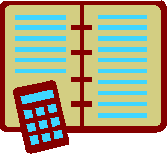
Providers are reminded that all Medicaid claims for reimbursement must be supported with a record of the services provided. At a minimum, this should include:
- the participant's name;
- the date of service;
- the start and end time of each session;
- a description of the activities performed during the session; and
- the participant's service plan goals that are being worked on and the participant's progress toward attaining those goals.
For example, participants in the Structured Day Programs should have records that would document the times of their individual attendance and provide a summary of the activities as well as a statement on their goals and progress.
In those situations where participant services overlap for training and evaluation purposes, the need for these services should be supported by the participant's service plan and should be clearly documented in the record.
Billing Requirements
Audit staff identified several common billing errors. These included:
- Rounding partial service hours upward to the next whole hour. Service of less than one hour should be carried forward to the next service date and combined to accumulate billable time in whole hours. This practice should be fully documented.
- Billing from program or participant schedules rather than staff reports of actual time spent and activities performed with the participant.
- Failure to void or adjust claims to reflect information obtained from participant complaints or incident reports that services were not performed.
Any questions concerning these issues should be directed to Bruce Rosen in the Bureau of Long Term Care at (518) 474-6580.
Attention
DME
Providers
Durable Medical Equipment Changes
Return to Table of Contents
Effective for dates of service on or after January 1, 2005, please make the following changes to your Durable Medical Equipment Fee Schedule
(Rev. 4/04).
| CODE | PRODUCT | PRICE |
| L0110 | Cranial orthosis (helmet), with or without soft interface, non-molded (head protector, soft/hard) | $97.33 |
| E0628 | #Separate seat lift mechanism for use with patient-owned furniture, electric | $189.00 |
| E0629 | #Separate seat lift mechanism for use with patient-owned furniture, non-electric | $133.50 |
A seat lift mechanism is covered if all of the following criteria are met:
- The patient must have severe arthritis of the hip or knee or have a severe neuromuscular disease.
- The seat lift mechanism must be a part of the physician's course of treatment and be prescribed to effect improvement, or arrest or retard deterioration in the patient's condition. (The physician ordering the seat lift mechanism must be the treating physician or a consulting physician for the disease or condition resulting in the need for a seat lift. The physician's record must document that all appropriate therapeutic modalities (e.g. medication, physical therapy) have been tried and failed to enable the patient to transfer from a chair to a standing position.)
- The patient must be completely incapable of standing up from a regular armchair or any chair in their home. (The fact that a patient has difficulty, or is even incapable of getting up from a chair, particularly a low chair, is not sufficient justification for a seat lift mechanism. Almost all patients who are capable of ambulating can get out of an ordinary chair if the seat height is appropriate and the chair has arms.)
- Once standing, the patient must have the ability to ambulate.
Coverage is limited to those types which operate smoothly, can be controlled by the patient, and effectively assist a patient in standing up and sitting down without other assistance. Excluded from coverage is the type of lift which operates by spring release mechanism with a sudden, catapult-like motion and jolts the patient from a seated to a standing position. Patient and seat lift equipment (E0628, E0629 and E0630) are not to be billed in combination.
Change to Wheelchair Accessory
For Medicaid-only purposes, code E0950 Wheelchair accessory, tray, each will no longer be payable as it does not accurately describe Upper Extremity Support Systems (UESS) used for positioning needs. UESS will require a prior approval using K0108 Other accessories, if documentation is presented that the medical need for positioning in a wheelchair cannot be met with less costly alternatives such as any combination of a safety belt, pelvic strap, harness, prompts, armrest modifications, recline, tilt in space, or other existing or potential seating or wheelchair features. UESS featuring dimensions greater than is medically needed for upper extremity support and wheelchair trays used to complete activities of daily living will not be approved.
Questions may be referred to the Bureau of Medical Review and Payment at (518) 474-8161.
eMedNY
Update
Dental Providers
Dental Claims HIPAA 837D Transaction
Change in Oral Cavity Reporting
Return to Table of Contents
The implementation of eMedNY Phase II (anticipated in March 2005) will require a change in the reporting of ORAL CAVITY designations in the HIPAA 837 Dental (837D) transaction, as explained below.
Issue
This article is a reprint from the November 2004 Medicaid Update
Currently, Medicaid recognizes two ORAL CAVITY designations which do not have a mapping in the HIPAA 837D:
- Upper Anterior Sextant; and,
- Lower Anterior Sextant.
The instructions given in the Companion Guides to report these two designations are to enter:
- Oral Cavity Code 09 (Other Area of Oral Cavity) in Loop 2400, Segment SV304; and,
- A Tooth Code (06 - 11 for the Upper Anterior Sextant and 22 - 27 for the Lower Anterior Sextant) in Segment TOO02.
eMedNY will not recognize the two Oral Cavity designations indicated above. These specific instructions will be nullified as of Phase II implementation.
Solution
Only oral cavity values and definitions listed in the HIPAA Implementation Guides will be recognized and accepted as valid.
The Companion Guides for the 837D, which can be found at www.nyhipaadesk.com, will be updated accordingly.
For questions regarding this article, please call Computer Sciences Corporation at (800) 522-5518.
eMedNY
Update
All Providers
Magnetic Media Processing Will Change in March 2005
Return to Table of Contents
Upon implementation in March 2005, eMedNY Phase II will not accept magnetic media such as:
- tape,
- diskette, and
- cartridge
Trading partners who currently use this type of media for claim submission will need to migrate to CPU-to-CPU, FTP, or eMedNY eXchange and will need to obtain user IDs and passwords.
As with the inbound submissions, physical media (tape and cartridge) will no longer be used to produce remittance advices.
- Individual providers and managed care plans who choose to receive the HIPAA 835 or the 820 transactions will receive these as electronic transmissions.
- Providers and managed care plans will still have the option of receiving paper remittance advices instead of the 835 or 820 transactions.
For questions regarding this article, please call Computer Sciences Corporation at (800) 522-5518 or (518) 447-9860.
eMedNY
Update
All Providers
Changes Affecting Prior Approvals/Prior Authorizations
Return to Table of Contents
eMedNY Phase II (anticipated in March 2005) will introduce changes that impact the submission of prior approval/prior authorization requests and the responses to those requests:
This article is a reprint from the November 2004 Medicaid Update
- Electronic prior approval/prior authorization requests and responses will be allowed only on the HIPAA 278 transaction. The Companion Guides for the HIPAA 278, available on the www.nyhipaadesk.com website, have been updated accordingly. The MMIS Legacy electronic Prior Approval/Prior Authorization format will be discontinued.
- Paper prior approval/prior authorization request forms have been modified to comply with eMedNY requirements. Samples of the new forms are available at the eMedNY website: http://www.emedny.org. The layout and completion of the new forms will be discussed in training sessions, which will be offered by CSC in the near future.
- The prior approval/prior authorization number format will change from 8 digits to 11 digits. After the eMedNY Phase II implementation, providers will be allowed to continue using Legacy prior approvals/prior authorizations (8-digit numbers) until they expire or the units are exhausted. When using a Legacy prior approval/prior authorization in claim submissions (both electronic and paper) to eMedNY, providers will be required to add three zeroes in front of the prior approval/authorization number to comply with the 11-digit eMedNY requirement.
- Prior Authorizations for non-emergency transportation for New York City recipients will continue to be issued over the CSC Prior Authorization line for providers who choose that method.
For questions regarding this article, please call Computer Sciences Corporation at (800) 522-5518 or (518) 447-9860.
eMedNY
Update
All Providers
ePACES Enhancements for Phase II
Return to Table of Contents
The current functionality in ePACES will continue to be available following the eMedNY Phase II implementation in March 2005. In fact, if you are a current ePACES user, your ID and password will not change for Phase II.
When eMedNY Phase II is implemented, some exciting new features will be available in ePACES. For example:
- Real-time processing will be available for professional claims (837P) up to a maximum of four (4) lines. When you select the real-time option, your claim will be processed as soon as it's received by eMedNY, and the status of your claim (including payment amount) will be available for viewing in ePACES. The actual payment will be included in your disbursement based on Medicaid's payment cycle.
- You will be able to enter your requests for prior approval on ePACES. A reference number will be returned to your ePACES screen, which can be later used to check the approval status on ePACES.
- When submitting a batch of claims with the new ePACES, one of the claims in the batch is rejected all other claims in the batch will be accepted for processing. A list will be provided to identify the rejected claim, so it can be corrected and resubmitted.
You can sign up for ePACES now. Signing up for ePACES will also give you access to eMedNY eXchange.
To find out more visit our website at, http://www.emedny.org or contact the CSC HIPAA Helpline at 1-800-522-5518.
Many of Your Patients May Benefit From the Earned Income
Tax Credit!
Return to Table of Contents
The Earned Income Tax Credit (EITC) is an important tax benefit that may be available to your Medicaid and other patients with low earned income. The EITC can significantly increase the available income of low income wage earners.
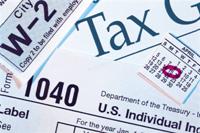
For example, a family with two children and one wage earner holding a full-time minimum wage job can increase their income by over
one-third from State and federal EITC(s).
The EITC is not counted as income for Medicaid or Family Health Plus.
Medicaid does not count the EITC as a resource in the month the EITC payment is received or in the following month.
The maximum credits are:
| • Two or more children | $4300 (federal) + $1290 (State) = $5590 |
| • One child | $2604 (federal) + $ 781 (State) = $3385 |
| • No children | $ 390 (federal) + $ 117 (State) = $ 507 |

The Volunteer Income Tax Assistance Program (VITA) offers free tax help to people with low earned income. Volunteers are trained to help prepare basic tax returns in communities across the country.
VITA sites are located at community and neighborhood centers, libraries, schools, shopping malls, and other convenient locations. To locate the nearest VITA site, call (800)-829-1040.
Please encourage your patients to file a tax return. To claim an EITC credit the wage earner must file a tax return, even if the wage earner's income does not require that a tax return be filed.
Please feel free to copy the following information and distribute it to your patients.
Other brochures about this program (available in English, Arabic, Chinese, Russian, and Spanish), along with additional information about the EITC, can be found at:
http://www.OTDA.state.ny.us/reform/default.htm

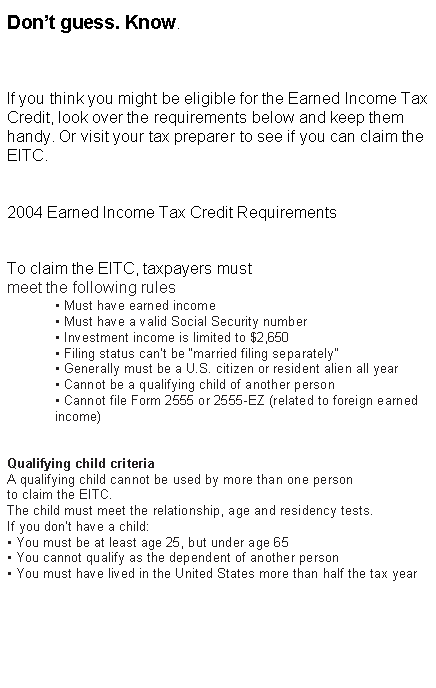

eMedNY
Update
All Providers
Electronic Billing Changes for Ambulatory Services
Return to Table of Contents

Do you bill Medicaid for ambulatory services, such as laboratory and radiology services (Categories of Service 0281, 0282, 0162 or 0163)?
If so, here is important information!
Once eMedNY Phase II is implemented in March 2005, you will not be able to bill ambulatory services on the Institutional Health Care Claim (837I) electronic transaction.
Upon implementation of eMedNY Phase II, electronically billing ambulatory services will be allowed only on the Professional Health Care Claim format (837P).
Change Request Project
The Department has initiated a high priority change request project to address this issue, which will be put in place shortly after the implementation of Phase II. This change request will allow billing of ambulatory services using the 837I format.
In the interim, hospitals and clinics that bill Medicaid fee-for-service ambulatory services will have three options until the 837I project is finished:
- Submit your ordered ambulatory services on a paper NYS HCFA-1500 form or via ePACES.
- Develop the ability to submit claims for ambulatory services on the 837P. This format is supported on the existing system, and will continue to be available following the Phase II conversion in March 2005. You will be able to convert these claims to the 837I after the high priority change request project has been implemented.
- Hold your ambulatory claims until the 837I format for these services is implemented. The Department will work with you to provide flexibility regarding claim filing time limits beginning with the Phase II conversion.
For questions regarding this matter, please call Computer Sciences Corporation at (800) 522-5518 or (518) 447-9860.
Did You Know...
For All Medicaid Expenditures Made During Calendar Year 2003,
The Federal Government's share was 51.4%,
Local Government's share was 16.7%, and
the New York State share was 31.9%?
Data taken from http://www.health.state.ny.us/nysdoh/medstat/medicaid.htm
Attention
Physicians and
Nurse Practitioners
New Drug Code For
Risperdal Consta
Effective January 1, 2005
Return to Table of Contents

Effective for dates of service on and after January 1, 2005, Medicaid will no longer accept claims for Risperdal Consta when billed under the S0163 code.
Please add this new code to your respective provider manual (Rev. 7/03).
| CODE | DRUG | UNIT DESCRIPTION |
| J2794 | Risperdal Consta | Injection, Risperidone, Long Acting, 0.5mg |
NOTE ! The new code, J2794, carries a different unit description which will require a change in your current billing practice.
For billing questions, please contact CSC Provider Services at (800) 522-5518.
PROVIDER SERVICES
Return to Table of Contents

Missing Issues?
The Medicaid Update, now indexed by subject area, can be accessed online at the New York State Department of Health website:
http://www.health.state.ny.us/health_care/medicaid/program/main.htm
Hard copies can be obtained upon request by calling (518) 474-9219.
Would You Like Future Updates Emailed To You?
Email your request to our mailbox, MedicaidUpdate@health.state.ny.us
Let us know if you want to continue receiving the hard copy in the mail in addition to the emailed copy.
Do You Suspect Fraud?
If you suspect that a recipient or a provider has engaged in fraudulent activities, please call the fraud hotline at: 1-877-87FRAUD. Your call will remain confidential.
As a Pharmacist, Where Can I Access the List of Medicaid Reimbursable Drugs?
The list of Medicaid reimbursable drugs is available at: http://www.eMedNY.org/info/formfile.html
Questions About an Article?
For your convenience each article contains a contact number for further information, questions or comments.
Do You Want Information On Patient Educational Tools and Medicaid's Disease Management Initiatives?
Contact Department staff at (518) 474-9219.
Questions About HIPAA?
Please contact the HIPAA Support Helpline at (800) 522-5518 or (518) 447-9860.
Address Change?
Please contact the Bureau of Medical Review and Payment at:
Fee-for-Service Provider Enrollment Unit, (518) 486-9440
Rate Based Provider Unit, (518) 474-8161
Billing Question? Call Computer Sciences Corporation:
Provider Services (800) 522-5518 or (518) 447-9860.
Comments and Suggestions Regarding This Publication?
Please contact the editor, Timothy Perry-Coon at MedicaidUpdate@health.state.ny.us or via telephone at (518) 474-9219 with your concerns.
The Medicaid Update: Your Window Into The Medicaid Program
The State Department of Health welcomes your comments or suggestions regarding the Medicaid Update.
Please send suggestions to the editor, Timothy Perry-Coon:
NYS Department of Health
Office of Medicaid Management
Bureau of Program Guidance
99 Washington Ave., Suite 720
Albany, NY 12210
(e-mail MedicaidUpdate@health.state.ny.us)
The Medicaid Update, along with past issues of the Medicaid Update, can be accessed online at the New York State Department of Health web site: http://www.health.state.ny.us/health_care/medicaid/program/main.htm